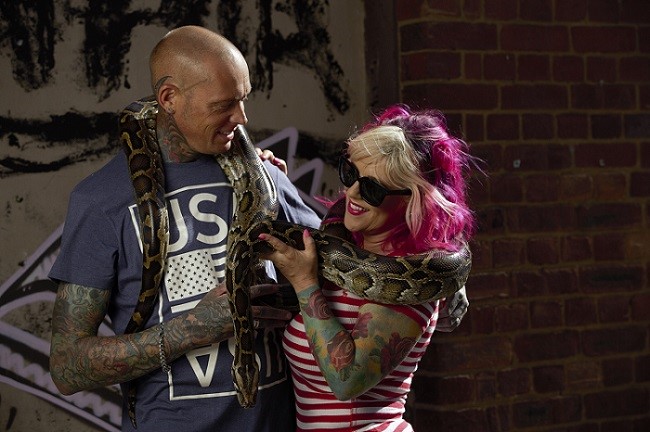Summer in KwaZulu-Natal means everybody is heading outdoors to enjoy the sunshine – resident snakes included. And while snake encounters are often alarming, local snake rescuers, Simon Keys and Siouxsie Gillett, are just a phone call away, ready and waiting to assist.
The British-born couple have found a home in eMdloti, and from this base they venture across Durban and surrounds, rescuing snakes and relocating them to safer environments. Many of these incredible snake rescues have made it to the Nat Geo Wild television show, Snakes in the City, brought to television screens by production company, Earth Touch.
While summer is always a time of increased snake activity, Simon explained that the recent rainfall will attract them in greater numbers as they tend to dine out on the frogs and toads commonly found in wet weather.
“These amphibians attract several types of snake species, many of them harmless like the herald snakes, or the mildly venomous like the night adders, which aren’t life threatening to humans but can give quite a bad bite, especially to smaller pets,” he explained. “The most dangerous snake that feeds on frogs and toads is the Mozambique spitting cobra, the brown-coloured snake that is very common in and around Durban. It will hood up and spit, or even spit lying down, and should not to be approached.”
He said that – as is the case with all snakes – they’d rather not approach humans, however, if someone approaches a snake it will defend itself like any other animal.
“The best thing to do is, if you think there’s a snake in your garden, house or even car, is to phone a snake catcher,” he said, adding that while people are scared of snakes, snakes are undeniably much more scared of people. “Snakes will only bite if threatened, or accidentally trod on, which doesn’t happen very often.”
Snake season will continue through to May, but because Durban doesn’t get particularly cold, snakes are always around. “They will come out to bask on the hotter days, and then they become active and start hunting. Snakes, like black mambas, will climb up trees or onto people’s roofs where they can get to the sun to warm up quickly. They are common in this area but are seldom seen.”
Simon warned that snakes cannot differentiate between a house, car or the outside world, they just take note of objects. “They’re there by accident, they’re not hunting people. If it’s really a hot day, they end up inside for shelter. Or looking for water, around pools. We often find herald snakes near pools looking for frogs and toads.”
Another common snake sighting in the Durban area is the bush snake – a long, thin green snake with black spots that is often confused with a green mamba. “Green mambas are only found along the coastal belt from uMhlanga north, and they’re very shy snakes so rarely seen. Usually when people find a green snake it’s a harmless bush snake which feeds on geckos –it’s actually a good snake to have around if you have lots of geckos.”
The couple attend to call outs across the Durban Metropolitan area, as far west as Hillcrest, south to uMlazi and north to Nkwazi. They can assist by contacting other snake rescuers if needed, and can often assist over the phone. If it is a dangerous situation, however, they will not hesitate to attend to it.
For yourown safety and for that of the snake, contact Simon and Siouxsie on 060 6336054 for any snake removals. And don’t miss the charismatic duo in action onSnakes in the City – catch the Season 5 Marathon on Nat Geo Wild this Sunday,16 December.
